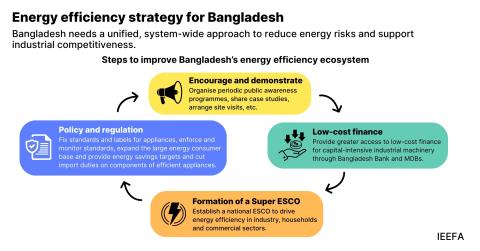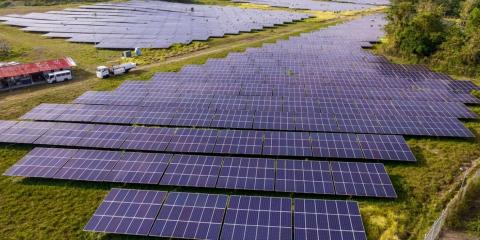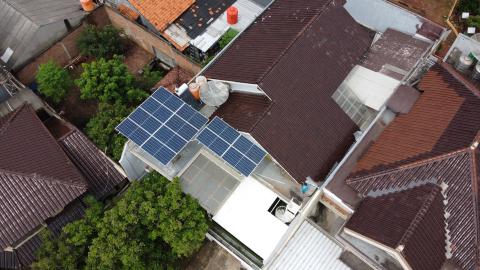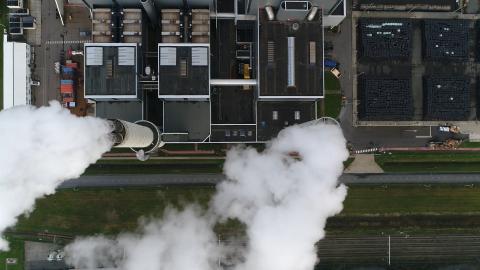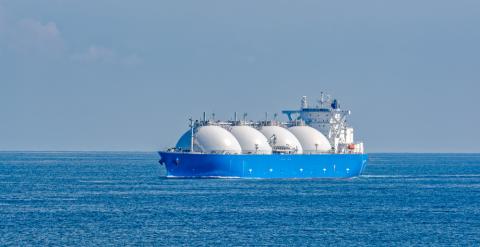Déjà vu as EU risks overreliance on one gas supplier

Key Findings
The EU’s high-risk plan of purchasing US$750 billion of US energy in the next three years is unachievable and could risk the bloc’s energy security.
Significantly increasing EU LNG imports to satisfy the deal is unrealistic as the EU’s gas demand is declining.
By spending US$750 billion on renewables instead, the EU would be able to expand its installed solar and wind capacity by about 90%.
The EU’s new plan to buy US$250 billion of US energy for each of the next three years is unrealistic and could risk the bloc’s energy security.
The commitment is part of a trade deal agreed by Brussels and Washington on 27 July that will see tariffs of 15% on most of the EU's exports to the US.
The EU intends to buy US$750 billion of US energy in the next three years as it replaces purchases of oil and gas from Russia. The bloc has also agreed to invest US$600 billion in the US.
In 2024, the US was the EU’s largest supplier of petroleum oils and LNG, and its second-largest supplier of coal.
In the first half of (H1) 2025, 55% of EU LNG imports were from the US, 16% from Russia, 9% from Qatar, 6% from Nigeria and 5% from Algeria. The US accounted for 27% of combined EU gas pipeline and LNG imports in the same period.
Massively increasing LNG imports to satisfy the deal is unachievable. Europe’s gas demand is declining, and the market is unlikely to absorb excess volumes. Furthermore, the gas market is inherently volatile, and LNG is an expensive fuel. The EU paid about €225 billion for LNG imports in the last three years, including €100 billion for US LNG. This high amount is partly because US LNG is more expensive for EU buyers than LNG from any other supplier.
The EU's plan to buy US$250 billion of US energy per year risks an overreliance on one supplier. Based on 2024 prices and keeping the same proportion of energy products bought from the US to total energy imports, IEEFA estimates that the EU would need to triple its imports of US oil, coal and LNG in 2025 to meet the commitment.
EU imports of oil, coal and LNG totalled €315 billion in 2024. €262 billion of this was oil (453 million tonnes per annum), €12 billion coal (63 million tonnes per annum) and €41 billion LNG (80 million tonnes per annum).
The EU spent €65 billion on US oil, coal and LNG in 2024. This includes €42 billion paid for oil, €4 billion for coal and €19 billion for LNG from the country. The US accounted for 21% of EU imports of these three fuels last year.
To meet the commitment of buying US$250 billion (€215 billion) of energy products from the US per year, the EU would need to source about 70% of its energy imports from the country. The deal effectively ties the bloc's energy supply to a single seller.
It is not clear what the US$250 billion of energy purchases per year from the US will mean in volumes due to price fluctuations, contracts already signed with other sources, and supply and demand restrictions.
There is great uncertainty and risk around this deal regarding gas and LNG demand, diversification of suppliers, climate regulations and financial viability.
As European gas demand continues to decline to 2030 and beyond, LNG sellers will struggle to find buyers in the continent. How much more LNG can the EU buy from the US when a global LNG supply glut is expected by 2030?
Incentivising LNG imports could lock in dependency on fossil gas – which could lead the EU to miss its 2040 target of reducing net greenhouse gas emissions by 90%, compared to 1990 – and lead to financial risk related to compliance with the EU Methane Regulation.
Renewables will boost EU energy independence
The cost of renewable generation, particularly solar photovoltaics (PV), has fallen significantly in recent years.
The weighted average total installed cost of utility-scale solar PV projects in Europe has more than halved in the last 10 years, falling from US$1,759 per kilowatt in 2015 to US$779 per kilowatt in 2024, according to the International Renewable Energy Agency. There have also been significant cost declines for onshore and offshore wind.
In 2024, 46.9% of net electricity generated in the EU came from renewable energy sources. EU utility-scale solar and wind capacity increased by 40.4 gigawatts (GW) in 2024, as the bloc installed 27.5 GW of utility-scale solar, 11.5 GW of onshore wind and 1.4 GW of offshore wind.
Renewable energy deployment and policies aimed at curbing gas consumption helped Europe’s gas demand decline by 20% in the last three years.
Instead of further increasing its dependency on US fossil fuels, the EU should invest in home-grown renewables projects.
By spending US$750 billion on renewables, the EU could install 321 GW of utility-scale solar, 151 GW of offshore wind and 74 GW of offshore wind. This would enable the bloc to increase its total installed solar and wind capacity by about 90% from 569 GW at the end of 2024.
Scaling up renewables deployment provides energy security and brings down electricity prices. Instead, the EU’s plan to increase its reliance on one energy supplier is a déjà vu moment for a continent still recovering from an energy crisis.



